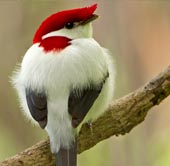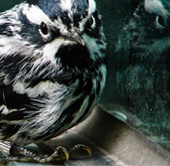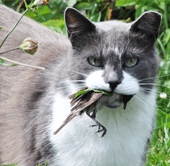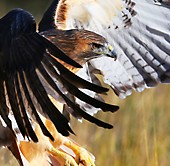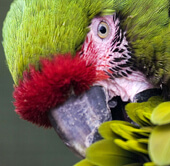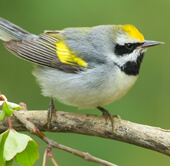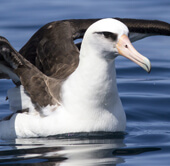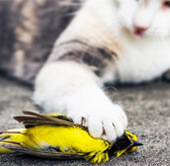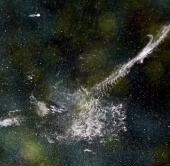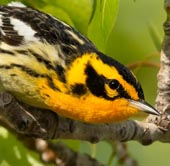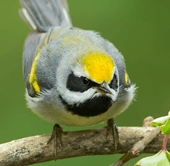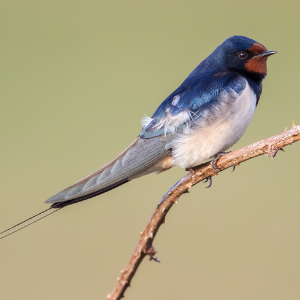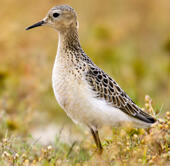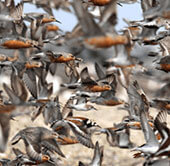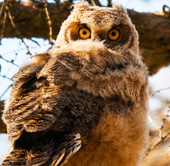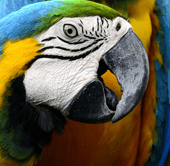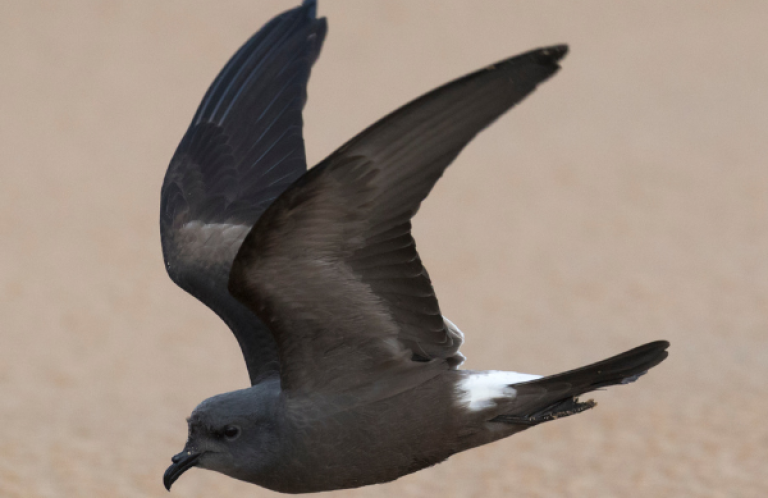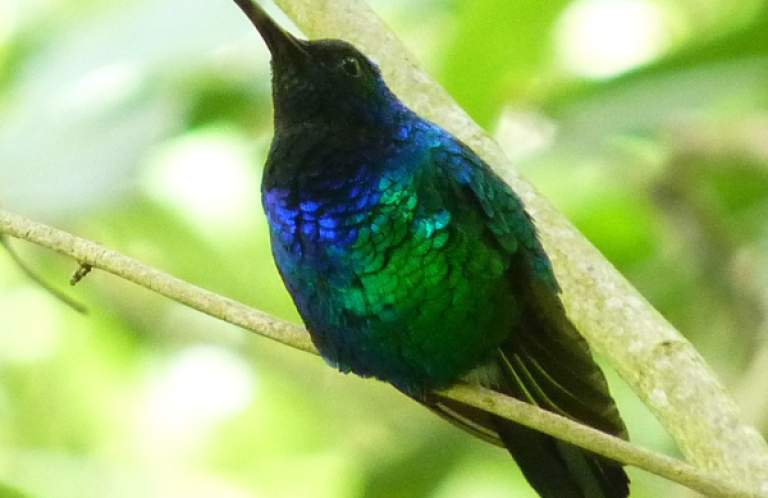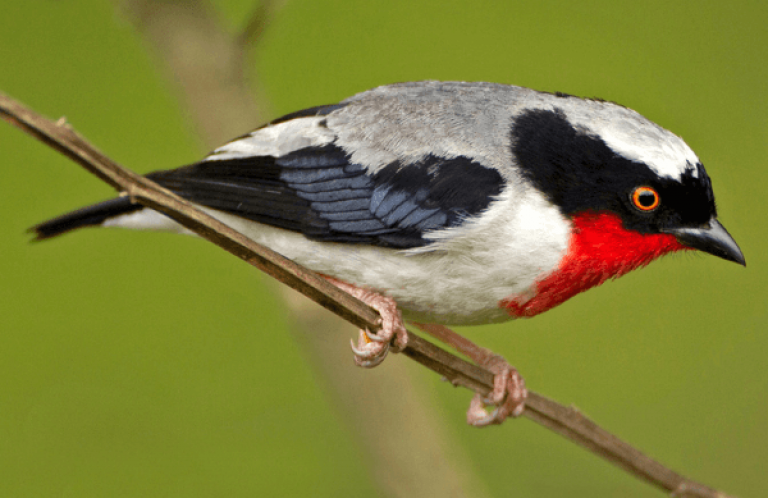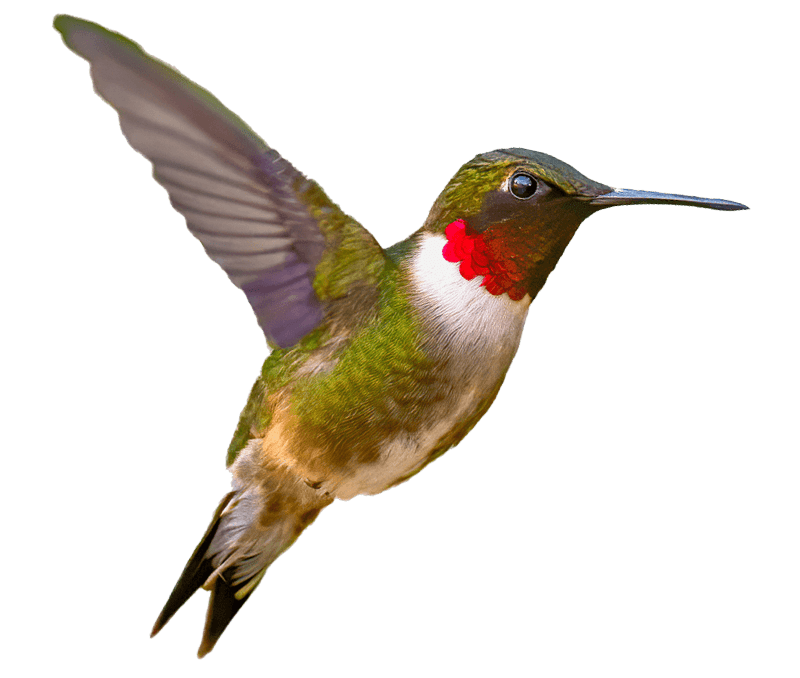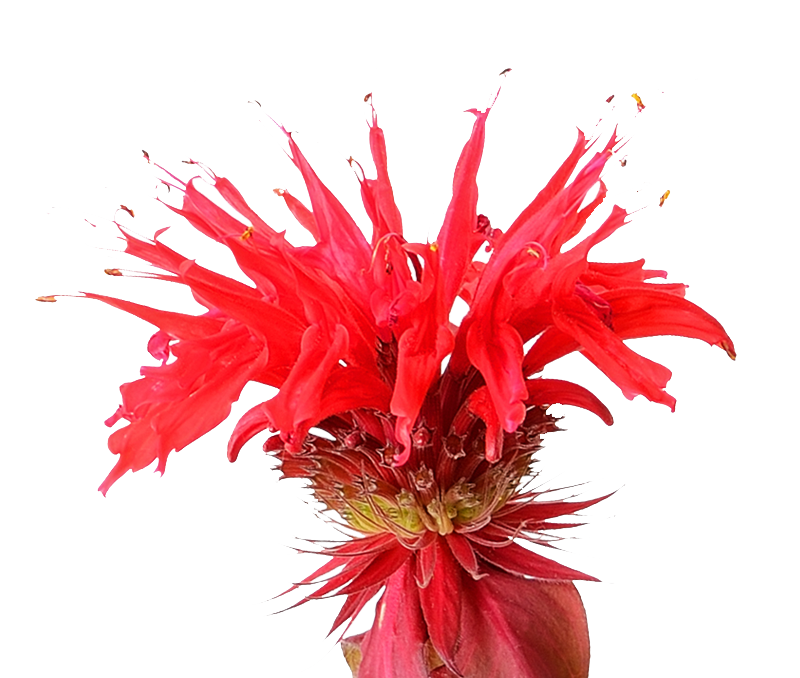The Leco Indigenous People are Leading the Conservation of the Palkachupa Cotinga in Apolo, Bolivia
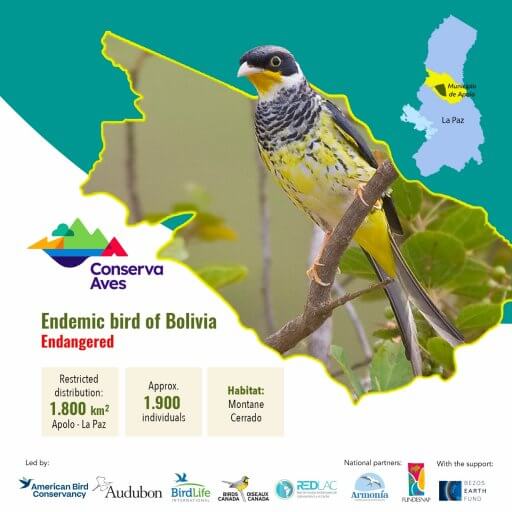
“That special bird, which has always been in our community, we've known it since we were children, although we didn't know it was called Palkachupa,” says Eduardo Cuajera Cordero, an Indigenous leader from the Leco de Chirimayo community in Apolo, Bolivia. For him, as for many in his community, the Palkachupa Cotinga (Phibalura boliviana) wasn't always an extraordinary species. As a child, he knew it as awicha pesco — “old bird” in Quechua — because of its gentleness. “We were mischievous when we were children and with an arrow, with a stone, we wanted to exterminate it, but with that innocence, without knowing that it was a very important bird in our community.”
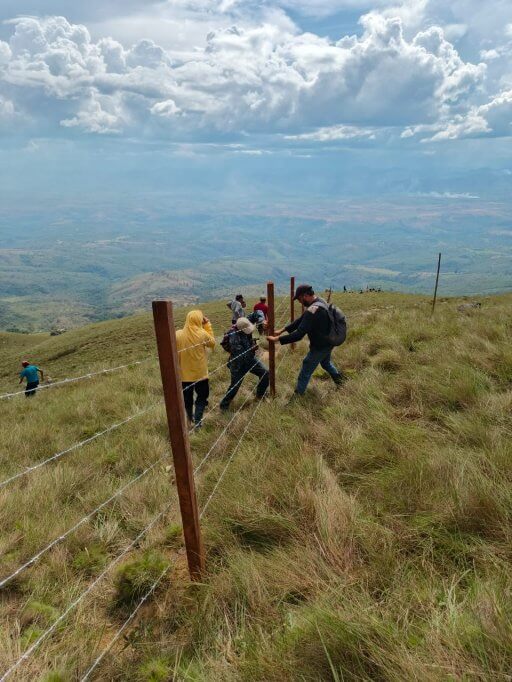
Everything changed when Asociación Armonía arrived with news: This small bird, with its long forked tail and striking yellow and black plumage, is endemic to Apolo (northern La Paz department, Bolivia). Rediscovered in the year 2000, the Palkachupa Cotinga now faces an alarming decline. With an estimated population of around 1,900 individuals and a distribution restricted to 1,800 square kilometers (1,118 miles), its survival depends on a single ally: the communities that share its habitat.
In this context, the Palkachupa stands out as one of Bolivia's threatened birds, whose habitat is found on the Key Biodiversity Areas (KBA) map within a priority area identified by Conserva Aves. Led by American Bird Conservancy (ABC), Audubon, BirdLife International, Birds Canada, and Red de Fondos Ambientales de Latinoamérica y el Caribe (RedLAC, or Network of Environmental Funds of Latin America and the Caribbean), Conserva Aves is a hemispheric initiative promoting the creation of 100 or more new subnational protected areas. In Bolivia, the initiative is working towards protecting over 700,000 hectares (1.7 million acres), including Palkachupa habitat.
The same region is also home to the Inti Tanager (Heliothraupis oneilli), a species discovered in 2021 and recently assessed by Armonía, which proposes its reclassification as Vulnerable due to its reduced population and accelerated habitat loss. Protecting this territory not only contributes to the conservation of these unique species but also strengthens efforts to safeguard the extraordinary biodiversity of a country that is among the 20 most biodiverse in the world, but where one in ten species faces some degree of risk of extinction.
Community Protected Areas
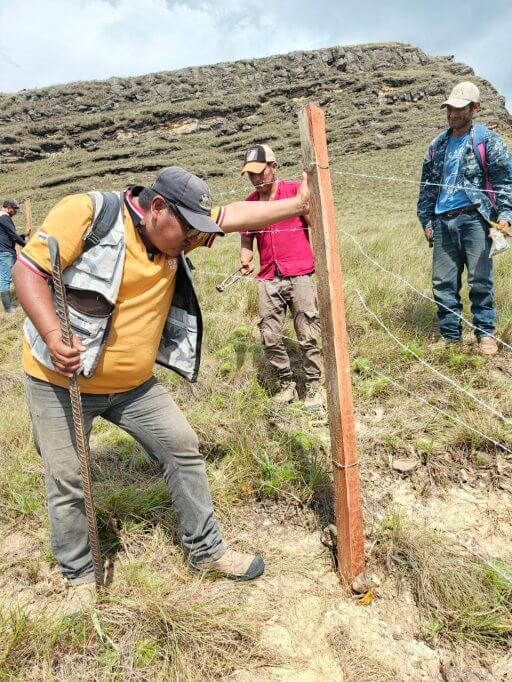
In Apolo, conservation has become a collective decision. With the leadership of the Indigenous Center of the Leco de Apolo People (CIPLA in Spanish) and the participation of two Quechua communities, San José and Santa Cruz del Valle Ameno, more than 1,888 hectares (4,665 acres) have been declared as Community Protection Areas. These zones, defined by their own inhabitants and legally recognized and included in their Life Plan — a community comprehensive planning document — now protect almost a quarter of the species' reproductive habitat.
"It is already reflected as protection zones, conservation areas for the Palkachupa," explains Dionisio Miguel Gutiérrez Cubo, Senior Captain of the CIPLA Indigenous center. "It is a commitment for an entire territory. It is not just about contemplating it, but about taking advantage of this potential that we have as part of our livelihoods."
“The creation of these protected areas by the Leco and Quechua communities, together with Armonía, is essential for the conservation of the Palkachupa and its habitat,” says Marcelo Tognelli, International Projects Officer for ABC, one of the leading Conserva Aves organizations. “Thanks to their work, we are getting closer to the goal of 17,890 protected hectares (44,207 acres) needed for the survival of the species.”
Nurseries and Habitat Restoration of the Palkachupa
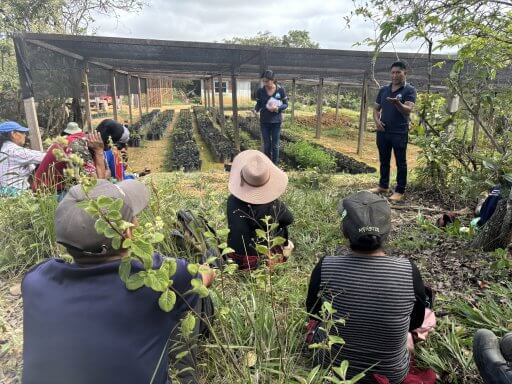
As part of the territorial commitment reflected in the Life Plan, the communities have launched an ambitious campaign to restore Palkachupa habitat. In the community nurseries of Pucasucho, San José, and Aten, 24,722 native seedlings have been produced, which were later distributed to various communities: Chirimayo (3,029), Muiri (2,680), Pucasucho (7,847), San José (5,720), Inca (2,569), and Aten (2,877), approaching the target of 25,000. The selected species — ichucaspi, mapaj, yuri, and pacay, among others — not only provide food for the Palkachupa, but also play a key role in water conservation and supporting livelihoods such as beekeeping.
The restoration has also included the strategic fencing of 165.5 hectares (408.9 acres) in the communities of Santa Cruz del Valle Ameno, Pucasucho, Chirimayo, San José, and Inca, using posts and natural barriers to prevent livestock intrusion and facilitate forest regeneration. Entire communities carry seedlings on their shoulders to the planting sites and organize weekly work shifts, such as in San José, where "every Thursday we work in the nursery," says Manuel Vidaurre, former Secretary General of the San José community. "Protecting an area isn't just about protecting the Palkachupa," summarizes Remmi Huanca, a technician from Armonía and Leco leader of the Pata Salinas community, "It's about protecting its water sources, improving bee habitats and livelihoods. It's an entire ecosystem that we're improving."
The Threat of Fire
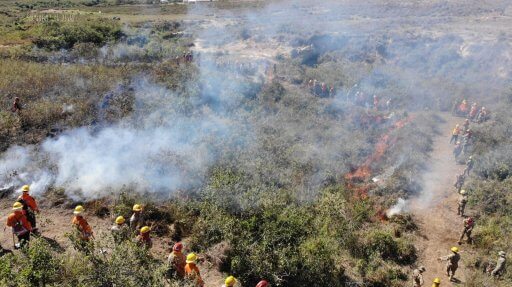
But in this fragile ecosystem, forest fires have become an increasingly frequent threat. Heriberto Ubano, a park ranger at Madidi National Park, has seen it firsthand: “The areas most prone to fire are precisely the grasslands, the habitat of the Palkachupa. I have seen areas where there were several birds, but in the following year, everything was devastated by fire.”
The lack of risk management tools leaves the first response in the hands of the community members and park rangers. In this context, Armonía has distributed equipment, installed water tanks, and trained 200 soldiers and more than 70 people in fire control, who support the Municipality of Apolo in responding to such disasters in the communities. However, the threat persists. “The dry season is already beginning, and this is a concern for all of us, especially for us as park rangers,” confirms Ubano.
In its next phases, Armonía aims to strengthen forest fire risk management in Indigenous and rural communities in the municipality of Apolo, in order to protect the Palkachupa habitat. To this end, says Palkachupa Program Coordinator Sandra Paredes, prevention actions will be prioritized, such as the implementation of green fire barriers consisting of the use of fire-resistant plant species, such as the yuri tree (Byrsonima crassifolia), which also provides food for this endemic bird. "We will also continue training community brigades, providing them with appropriate equipment, and offering ongoing training," says Paredes. “The project also includes the promotion of controlled burns, ecological restoration with native species, and drone monitoring, integrating ecosystem conservation with the protection and safety of local communities.”
Conserve the Palkachupa and strengthen community livelihoods
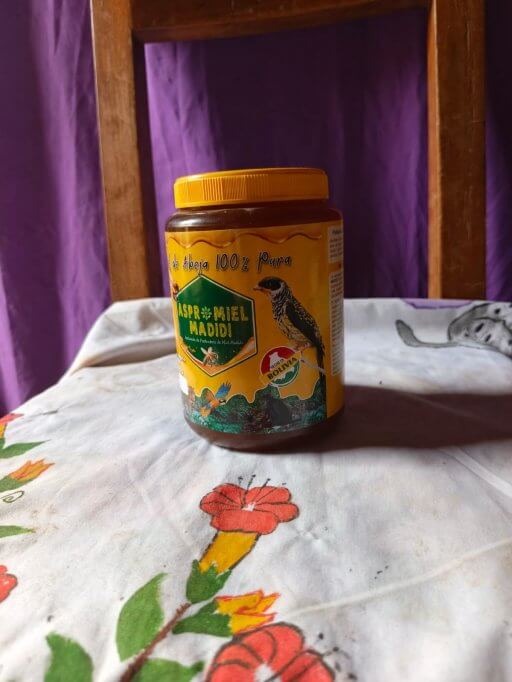
Fire not only threatens the Palkachupa. It also jeopardizes the livelihoods of the communities that live alongside it and who today are key allies in its conservation. Aware of this reality, the Palkachupa Program has worked to strengthen sustainable local economies that protect the habitat and generate real alternatives for families.
This is the case of three key associations in the region: the Madidi Honey Producers Association (ASPROMIEL) of campesino (peasant) beekeepers in the Madidi region; Achalao — a word in the Leco language meaning “very rich” — made up of Leco beekeepers; and the Apolo Coffee Producers Association (APCA). All of them have received support at different stages of their production chain, with the goal of strengthening their sustainability and linking their production to conservation.
Achalao brings together 19 communities that manage more than 600 hives of native bees, both stingless and with stingers. Thanks to training and the construction of a collection center in the Indigenous community of Chirimayo, 147 people have improved their production conditions. Meanwhile, ASPROMIEL unveiled a new corporate image that links honey to the Palkachupa ecosystem, reinforcing the conservation message on every jar and bringing this product closer to the market.
APCA works with 144 families from 19 communities. In Apolo, support was provided for the interior redesign of their café to strengthen the identity of local coffee, creating a family-friendly space for residents and visitors. In Muiri — a community known for its export-quality coffee and particularly affected by the fires — equipment was provided for coffee processing, with the aim of consolidating this production as a primary source of income.
Bird Tourism, a Driver of Conservation
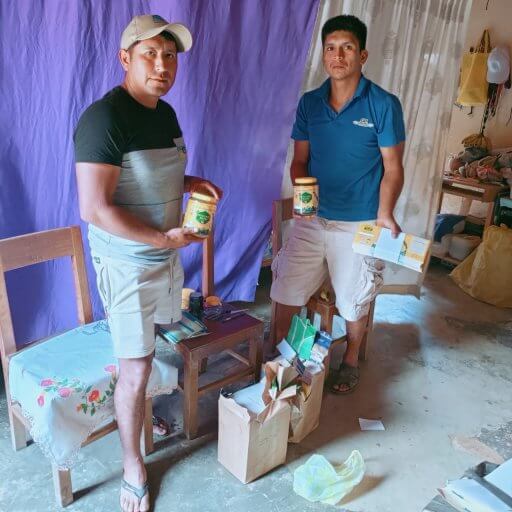
In addition to local products, a community-based birdwatching model has been promoted, inspired by successful experiences led by Armonía, such as birding tours in the Frente Roja Community Natural Reserve and the Barba Azul Natural Reserve. Delegations of Indigenous and campesino authorities from Apolo visited both reserves to learn firsthand about these models. In Frente Roja, the exchange focused on community conservation and strengthening ties between communities committed to biodiversity. In Barba Azul, the visits fostered a commitment to advance toward a sustainable livestock model adapted to environmentally compatible ecosystems.
“We are starting out as chicks,” says Eduardo Cuajera. “But in a few years, like a bird that has already fledged, we will begin to fly and show the world how wonderful we are.”
Identity, Territory, and Future: The Forest as Part of a Life System
The basis of this effort is not technical, but philosophical. The Life Plan is based on an ancient premise: Indigenous peoples are not just users of nature, they are its “nurturers and caretakers.”
“Conservation is very important to us,” says Captain Dionisio. “But also development, livelihoods. That's where our philosophy comes from: caretaker, nurturer.”
In Inca, when the Palkachupa appears, children are asked not to run, not to scream. “You even have to grab the dog so it doesn't scare it away,” says Captain Grande. “Because seeing it peacefully perched among the tall grasslands is a great joy. Sometimes you see them in groups, like one time in Muiri: more than 50 of them, sitting, as if saying, ‘Here I am.'”
The Palkachupa doesn't only live in the Apolo mountains. It also lives in the consciousness of those who care for it: communities that recognize it as part of their home, their identity, their future. Because the forest here doesn't take care of itself. It has names, it has faces, it has memory.
“As in other long-term conservation experiences — such as that with the Red-fronted Macaw — Armonía reaffirms its commitment to remain and build alliances based on trust,” says Palkachupa Program Coordinator Paredes. “Together with the Leco people and other stakeholders in Apolo, we are moving toward sustainable development, where the Palkachupa's safe habitat also guarantees a dignified life for those who protect it.”
This project received support from the Conserva Aves initiative, led by ABC, Audubon, BirdLife International, Birds Canada, and the Latin American and Caribbean Network of Environmental Funds (RedLAC).
Help protect birds in Bolivia by donating to Armonía today.
###
American Bird Conservancy (ABC) takes bold action to conserve wild birds and their habitats throughout the Americas. Inspired by the wonder of birds, we achieve lasting results for the bird species most in need while also benefiting human communities, biodiversity, and the planet's fragile climate. Our every action is underpinned by science, strengthened by partnerships, and rooted in the belief that diverse perspectives yield stronger results. Founded as a nonprofit organization in 1994, ABC remains committed to safeguarding birds for generations to come. Join us! Together, we can do more to ensure birds thrive.
Media Contact
Jordan Rutter
Director of Communications
media@abcbirds.org

